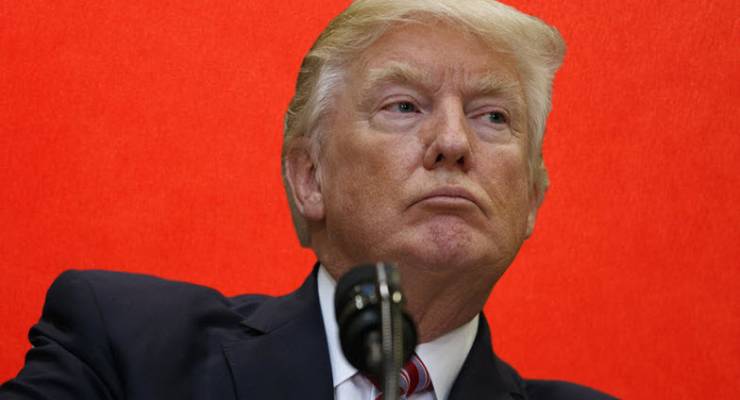
Analysis of the US economy through 2017 reveals two disturbing things. First, it deteriorated substantially on most critical measures. Second, reports from President Trump and the mass media continually hailed economic news as “best ever”, “record levels” and “never stronger”.
Are these two phenomena linked? Did the constant blatant denials of the steady crumbling of the economy serve to prevent remedial action?
With the global boom in trade, corporate profits and jobs in its third and strongest year, the US economy certainly advanced in many areas. But relative to comparable countries, and to recent US history, 2017 was a poor year.
Economic growth
The economy grew at an annual rate of 2.5% in the year to December. This is higher than the 1.8% registered in December 2016. But is lower than the average for the three preceding Obama years, 2013 to 2015, which was 2.6%.
Relative to the rest of the world, this is a weak outcome. US annual growth rate now ranks a miserable 118th in the world and a lowly 21st among the 35 rich, developed member countries of the Organisation for Economic Cooperation and Development (OECD).
Employment
Job numbers through 2017 appeared to continue the positive trends of the Obama years. By October the jobless rate had fallen to a creditable 4.1%, which then ranked equal eighth in the OECD.
But it hasn’t fallen further since. With the surge in jobs worldwide, the US jobless rate in December ranked only equal 47th in the world and equal tenth in the OECD.
Total new jobs added in 2017 totalled 2.1 million, which looks impressive. But that was actually well below the previous year — 2.34 million — and even further below the 2.7 million added in 2015, and the remarkable 3 million added in 2014. New jobs in 2017 were the lowest in five years.
The main indicator of jobs failure through 2017 was average weekly hours, which came to just 34.4 for the year overall. That is the lowest level since 2011. Given the current global employment surge, this is poor.
At the end of December, 6.5 million Americans still needed a job.
Government revenue and spending
At the end of the 2017 fiscal year in September, the deficit had blown out to a staggering $665 billion. That compares with $587 billion in September 2016. So already a blow-out of 13.4%. Of course, not all of that happened on Trump’s watch.
But when we examine the critical last three months of 2017 — which certainly was under his management — the deficit was $225 billion. That is 8% higher than Obama’s $208 billion a year earlier.
Government debt
The area of failure with arguably the most serious consequences is the ballooning federal government debt.
From $19.9 trillion at the end of 2016, this actually declined in the early months — as was happening in all well-managed Western economies. But in the second half of 2017, debt surged, breaking the $20 trillion barrier in September and ending the year at a new record, a shade under $20.5 trillion.
Only three countries now have debt above 100% of gross domestic product and still rising rapidly. They are Mozambique, Lebanon and the US.
Tourism
After a strong tourism boom in the late Obama years, tourist flows to the US slowed significantly in 2017. This is despite an extraordinary global boom in the sector.
Total tourism-related revenue for the six months from July to December 2016 was a healthy $122 billion. This fell in the last six months of 2017 to just $120 billion. Jobs in travel services declined significantly for the first time in five years.
Trade
If there’s one area of management worse than debt, it could be trade, when measured against US modern history and against the rest of the world. Not to mention, against promises.
For most of the Obama period, the US trade deficit fluctuated between -$35 billion and -$45 billion. Only twice in the last nine years did it sneak below -$50 billion, back in 2012.
But from a reasonable -$45 billion monthly deficit from June to September last year, it plummeted to -$49 billion in October, then -$50 billion in November and ended the year at -$53.9 billion — the worst in almost a decade.
Having the worst trade deficit in ten years is another distinction the US now has almost alone in the OECD. Only Mexico comes close. Many countries are currently at or close to record high trade balances.
Other indicators to slide badly through 2017 included the value of the US dollar, household savings, private debt and the tax burden on the poor.
But with virtually all the news — via presidential tweets, daytime TV and the proliferation of pro-Trump internet “news” sites — proclaiming things are “really good”, who needs actual data?








Crikey is committed to hosting lively discussions. Help us keep the conversation useful, interesting and welcoming. We aim to publish comments quickly in the interest of promoting robust conversation, but we’re a small team and we deploy filters to protect against legal risk. Occasionally your comment may be held up while we review, but we’re working as fast as we can to keep the conversation rolling.
The Crikey comment section is members-only content. Please subscribe to leave a comment.
The Crikey comment section is members-only content. Please login to leave a comment.